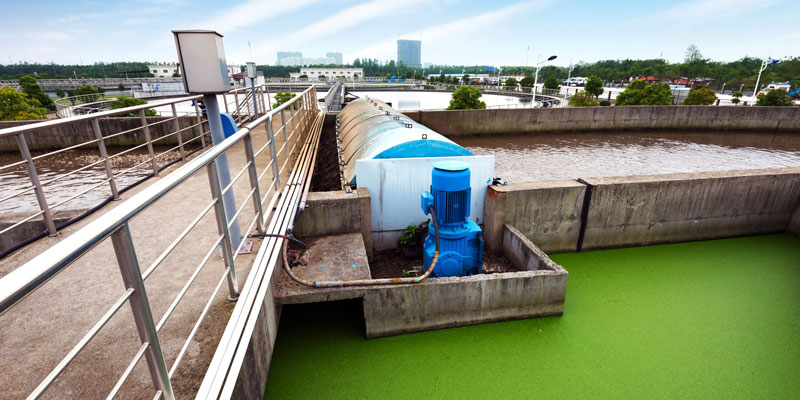Environmental Risks of Engineered Nanoparticles in Municipal Biosolids Applied to Agricultural Lands
Principal Investigator - Subhasis Ghoshal, Professor, McGill University, 2013 - 2015

Challenge
Engineered nanoparticles (ENPs) are ingredients in many consumer goods, ranging from food products to textiles. In the past five years alone, industrial uses of ENPs are projected to have quadrupled. Recent studies have indicated that a significant fraction of these ENPs enter wastewater treatment plants (WWTPs), and are reintroduced to the environment as waste Biosolids, posing significant challenges for municipal water managers.
At present, approximately 50% of waste biosolids in Canada are land applied, yet there is limited information on the transformations of ENPs in waste biosolids during processing and after land application, and virtually no literature on their environmental toxicity. With a growing motivation for biosolids reuse, and growing limitations on waste biosolids disposal, it is important that the levels and risks of ENPs in wastewater be assessed.
Led by Dr. Subhasis Ghoshal, the research team will investigate whether ENPs in waste biosolids pose an incremental risk to the environment or human health as a result of agricultural application.
Project
This project will establish the concentrations and characteristics of ENPs in waste biosolids and biosolids-amended soils, and the uptake and toxicity end points for ENPs in biota and crops in biosolids-amended soils. This will enable the researchers to assess the risk implications of ENPs in biosolid-ameneded soils.
Researchers will use several complementary techniques to analyse the target ENPs, employing two different separation techniques based on particle size and several on-line detection techniques to characterize the samples. The team willevaluate the transformation and mobility of the ENPs in different soils and environmental conditions, providing baseline data on ENP levels for waste biosolids from Canadian WWTPs and biosolids-amended soils.
Finally, researchers will identify the fate of ENPs during biosolids processing for stabilization, and energy and nutrient recovery, which will be used in the development of a knowledge-base for ENP transformations following land application. Pilot-scale experiments for anaerobic digestion and nutrient recovery processes will be conducted at the laboratory scale to determine at what concentration ENPs have a negative effect on methane formation, and to determine the transformations of the ENPs throughout the process.
Studies will be undertaken to develop a procedure to test the uptake and incremental toxicity of ENPs in biosolids to various model terrestrial organisms and crops, which will be used to determine whether ENPs are bio-available or toxic to ecological receptors.
Outputs
Anticipated Outputs Include:
- Conference presentations and focus workshops for municipalities, government agencies and other stakeholders;
- Organization of a capstone international workshop inviting municipalities, government agencies, researchers and industry involved in environmental risk assessment of ENPs, with a focus on wastewater biosolids and land application; and
- Publications in peer-reviewed journals as well as creating a website through the Brace Center for Water Resources Management for dissemination of information.
Outcomes
Anticipated Outputs:
Results from this research will help environmental and agricultural product regulators, environmental risk assessment experts, municipalities and WWTPs, as well as the agricultural producers determine if ENPs pose a current or future threat to the Canadian environment or human health.
The most important practical outcome of this work is the fundamental knowledge that will be generated on the levels and toxicity of ENPs in waste biosolids introduced to agricultural ecosystems, which will provide opportunities to scientific and technology consultants, nanoparticle producers, municipalities and other governmental regulatory agencies to protect the public good.
At the end of the study, researchers will be able to conduct preliminary risk assessments for ENPs introduced in agricultural lands by way of waste biosolids based on baseline concentrations of ENPs in TiO2, Ag and ZnO, their fate and transformations during biosolids stabilization, and ecotoxicity end points in selected terrestrial biota and soils.
This project was developed using a participatory approach to ascertain the needs of individual stakeholders and identify existing knowledge gaps. By working closely with project partners, it is anticipated that this study will result in more effective development of regulations and industry practices for nanotechnology.




